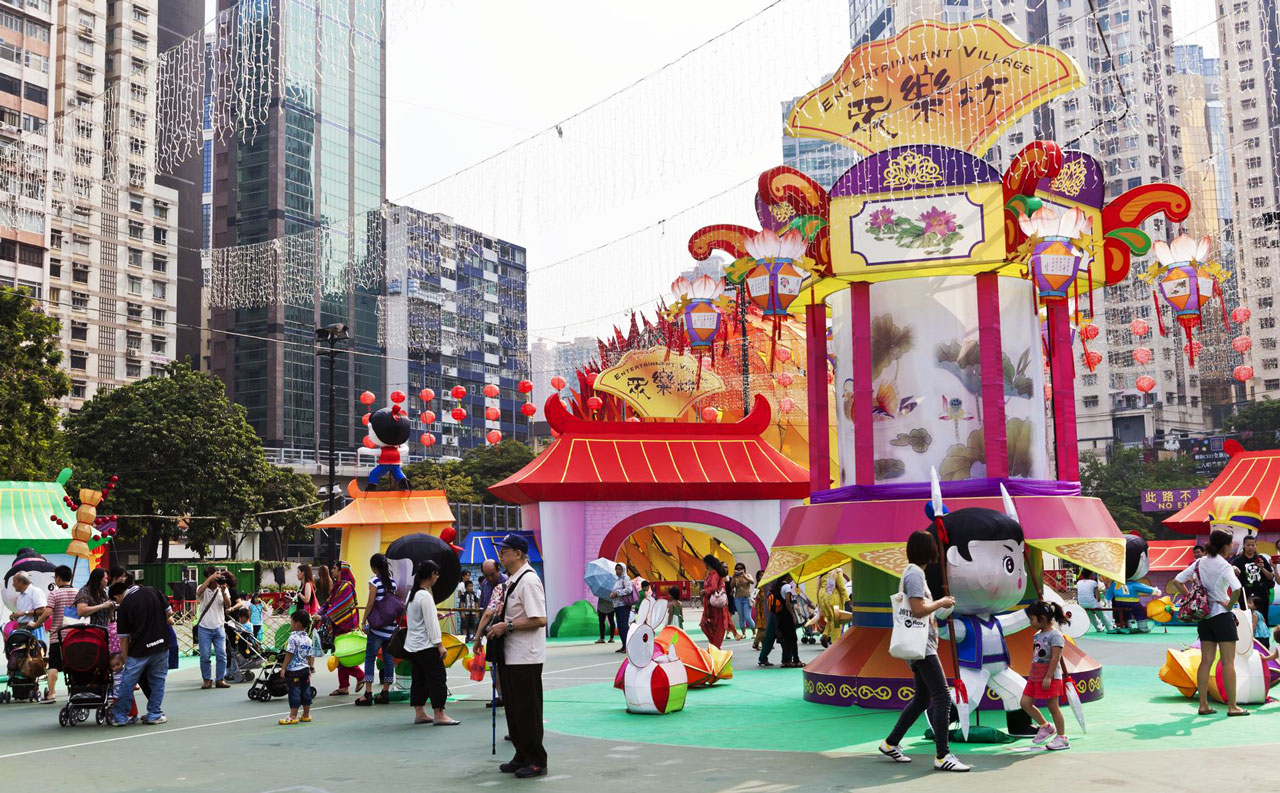
Hong Kong celebrates the Mid-Autumn Festival. Photo © kawing/123rf.
Hong Kong’s straight-laced, buttoned-down business reputation suggests a city that’s idea of a party is champagne, cheeseboards, and a soothing Chris de Burgh cover band. Don’t be fooled. Beneath their suits, Hong Kongers have a party animal ready to escape—and it frequently does. This is, after all, the city that perfected the dragon dance, sends people clambering up 60-feet towers to pluck off buns, and has never seen a firework it didn’t like—or light. Hong Kong has long been a stronghold of Chinese culture and its traditional festivals are celebrated with energy, color, and lots of noise.Because most Chinese festivals are linked to the phases of the moon, dates vary from year to year. For the following festivals, months are listed.
The year’s biggest celebration can be somewhat of a disappointment from a party point of view. The city shuts down for three days and most people either jet off to somewhere warmer or stay at home with families; much of the life is sucked out of the city. That said, both the annual parade and fireworks display are spectacular.
Read about Beijing’s celebration of Chinese New Year in the article Chun Jie: Spring Festival in Beijing by Shannon Aitken.×Also known as Chinese Valentine’s Day and marking the end of Chinese New Year, the Spring Lantern Festival sees colorful lanterns fill parks, streets, and villages.
An important day for families who trek to graveyards to clean their ancestors’ tombs and burn paper offerings, frequently setting half the hillside alight in the process.
The Goddess of the Sea—Tin Hau—is much revered in Hong Kong and her birthday is a day of widespread celebration, especially in fishing communities. It’s like looking at the Love Parade on boats: Hundreds of vessels are decked out in colorful ribbons and bright banners and loaded with offerings for Tin Hau. At Tin Hau temples expect elaborate and noisy ceremonies and dragon dances.
Hong Kong’s oddest festival and one of its best, the Cheung Chau Bun Festival is celebrated on its namesake island with a carnival parade that includes children dressed up as ghosts “floating” on stilts and the famous bun climb, where participants pitch themselves up a 60-foot bun tower and battle for the buns.
Centered around the International Dragon Boat Races, this festival is the culmination of some serious gym time and weeks of training as competitors go paddle to paddle in these breakneck boat races. For spectators, it’s about hitting the beach, the beer tent, and, for some, the floor, with revelers spending as much time admiring each other as the intricately carved wooden boats.
Hong Kong’s very own Halloween—it’s believed that mischievous and malevolent spirits try to return from the spirit world during the Hungry Ghost Festival. To appease them Hong Kongers burn paper offerings of essential items needed in the afterlife, including money, cars, and of course iPods.
Second only to Chinese New Year in importance, the Mid-Autumn Festival is famous for its spectacular lantern displays, winding dragon dances, and, most importantly, diet-ruining mooncakes.
Similar to Ching Ming, Chung Yeung is another day for dusting down ancestors’ graves, and also for hiking and picnicking on hilltops.
Excerpted from the First Edition of Moon Living Abroad in Hong Kong.